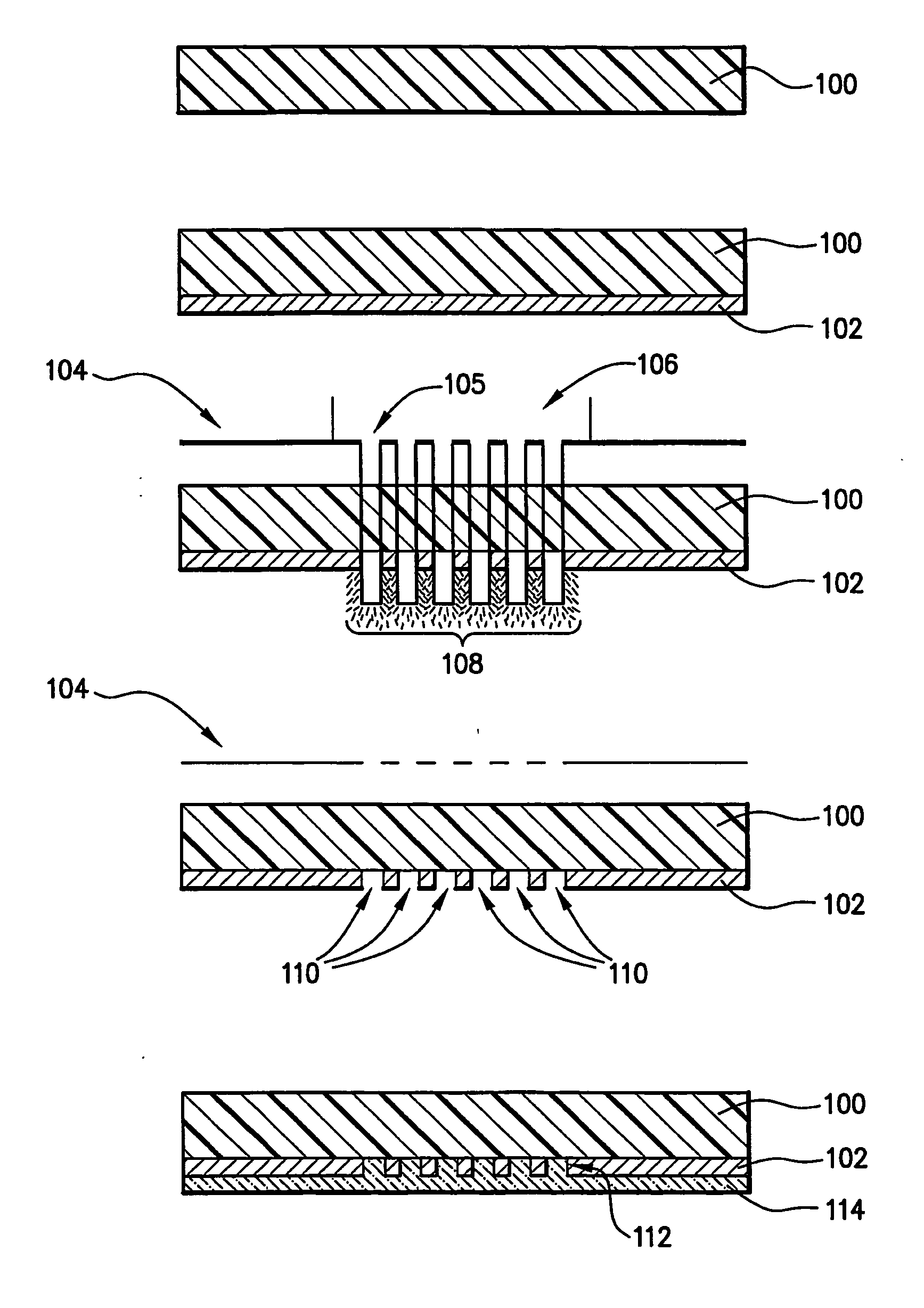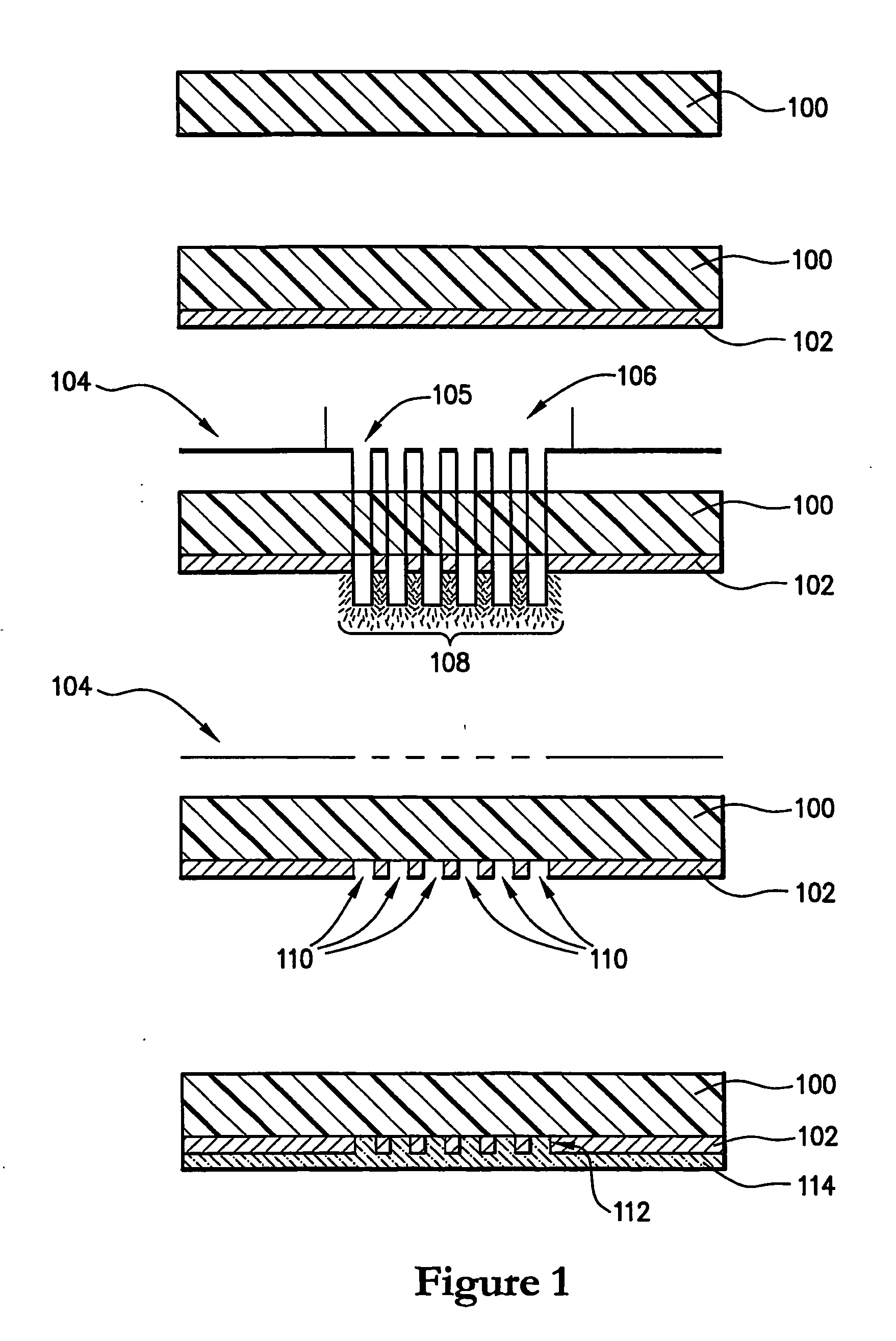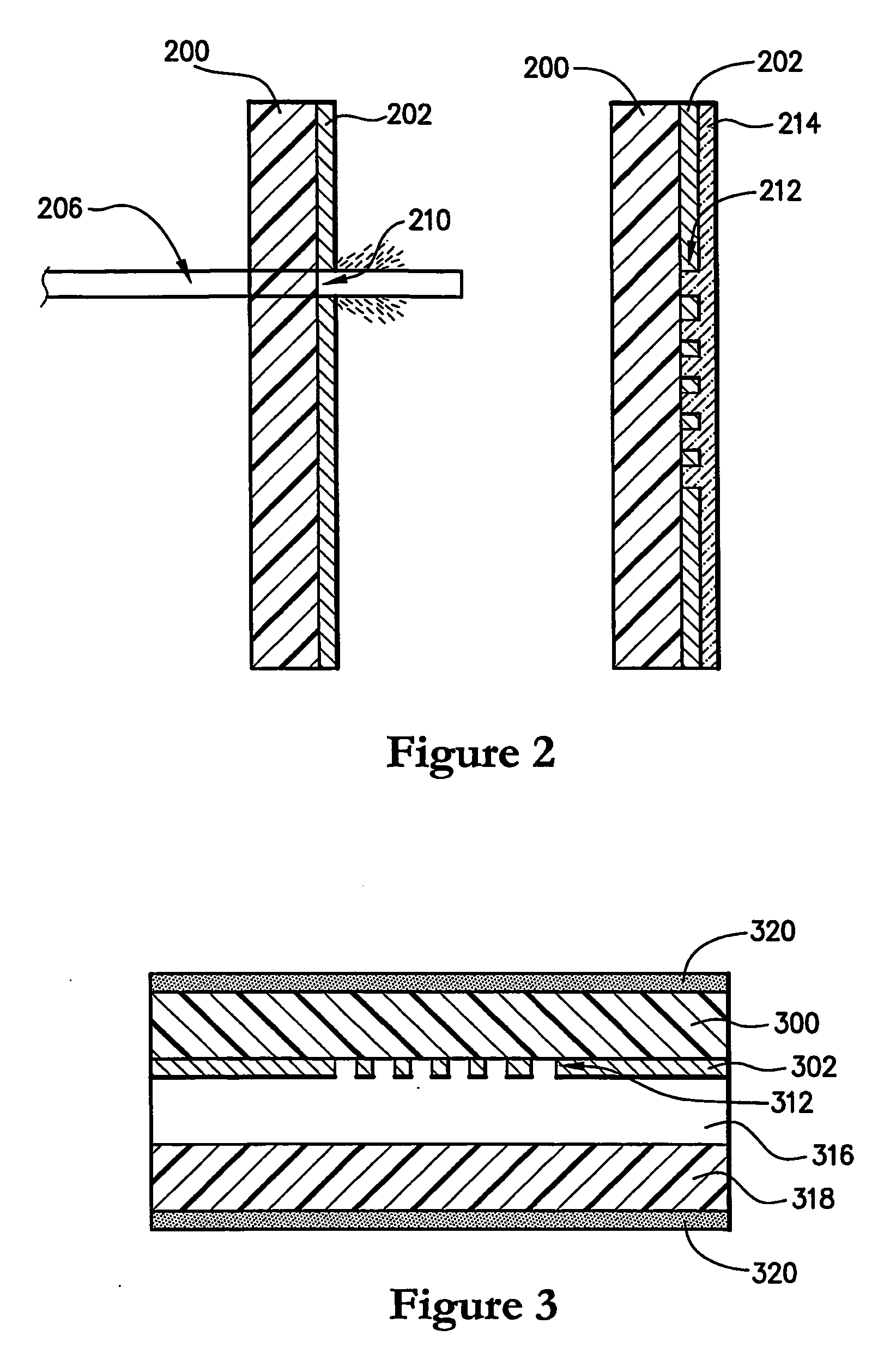Method Of Producing Diffractive Structures In Security Documents
a technology of diffractive structure and security document, which is applied in the field of producing diffractive structure in security documents, can solve the problems of easy destruction or damage of any attempt to tamper with the document, difficult falsification or modification, and relatively high susceptibility to physical wear and tear and/or chemical attack
- Summary
- Abstract
- Description
- Claims
- Application Information
AI Technical Summary
Benefits of technology
Problems solved by technology
Method used
Image
Examples
Embodiment Construction
[0041] Referring first to FIG. 1, there is shown a transparent plastics film 100 formed from polymeric material, used in the manufacture of a security document, or similar article, such as an identity card. The substrate 100 may be made from at least one biaxially oriented polymeric film. The substrate 100 may include or consist of a single layer of film of polymeric material, or, alternatively, a laminate of two or more layers of transparent biaxially oriented polymeric film. The substrate 100 is shown in cross section in FIG. 1.
[0042] An opacifying layer 102 is applied to one surface of substrate 100. The opacifying layer 102 may include any one or more of a variety of opacifying inks suitable for use in the printing of security documents formed from polymeric materials. For example, the layer of opacifying ink 102 may include pigmented coatings having a pigment, such as titanium dioxide, disbursed within a binder or carrier of heat activated cross-linkable polymeric material.
[0...
PUM
 Login to View More
Login to View More Abstract
Description
Claims
Application Information
 Login to View More
Login to View More - R&D
- Intellectual Property
- Life Sciences
- Materials
- Tech Scout
- Unparalleled Data Quality
- Higher Quality Content
- 60% Fewer Hallucinations
Browse by: Latest US Patents, China's latest patents, Technical Efficacy Thesaurus, Application Domain, Technology Topic, Popular Technical Reports.
© 2025 PatSnap. All rights reserved.Legal|Privacy policy|Modern Slavery Act Transparency Statement|Sitemap|About US| Contact US: help@patsnap.com



